Rosalia Sanni: Sculpture in the Landscape
May 15, 2012
Bringing art outside to the garden makes a lasting impression. The result can be sublime and inspiring, and in an ideal situation it can even touch our souls.
As a landscape designer, I am spellbound when I encounter a garden that has a direct connection to the art in it. When art and landscape are fused together, their dialogue creates a unique narrative that would not exist otherwise. It also provides a powerful interaction that transforms us from viewers into participants, who must confront the significance of our surroundings, their connection to the work, and our own involvement in the scene.
Our team at the landscape firm where I work, Doyle Herman Design Associates, has been fortunate to experience some magical places in our travels over the years. For example, this large-scale installation intricately patterned with shiny steel rods conveys a sense of duality. It is set in this location as a sharp contrast against soft, dense, verdant surroundings up close, and from a distance reflects a more organic and delicate quality within its naturalistic setting.
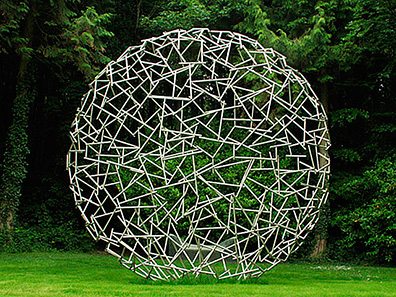
Julian Wild: System No 19, at the Cass Sculpture Foundation in West Sussex, England. Photo by Doyle Herman Design Associates
At the Jupiter Artland sculpture garden outside Edinburgh, Scotland, Weeping Girls by Laura Ford was sited to introduce drama in a melancholic atmosphere. Five little girls animate a woodsy meadow and occupy it with youthful intensity, some gesturing in the meadow and others leaning on trees.
The same artist has another site-specific installation closer to us, at the deCordova Sculpture Park and Museum in Lincoln, Mass.
At this private home, landscape and sculpture make a strong statement together. An allée of flowering cherry trees pulls us forward across an expansive canal overlooking a misty panorama. Inside the canal stands a mysterious, larger-than-life bronze statue that is about to step out into the unknown.
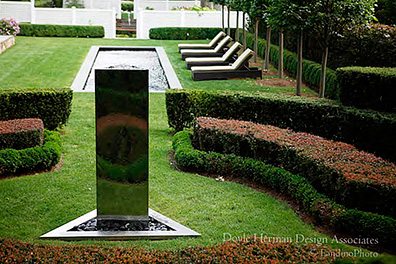
Bronze sculpture by Hanneke Beaumont at a private residence in Waccabuc, N.Y. Landscape design by Doyle Herman Design Asssociates; photo by Neil Landino, Jr.
In this garden, water repeats itself on axis. It murmurs in a sunken garden, ripples in a pool area, and gently overflows from a gleaming triangular steel tower at the center of a circular garden of sheared hedges. In the cold season, the water turns off and the reflective properties of the sculpture intensify while it continues to punctuate the space.

Stainless steel and water sculpture by Alan Wilson at a private residence in Greenwich, Conn. Landscape design by Doyle Herman Design Asssociates; photo by Neil Landino, Jr.
Here, tunnels of wisteria play back and forth with the form and texture of an abstract sculpture by Chakaia Booker while also framing a formal parterre garden and separating it from the garden room that houses this artwork.
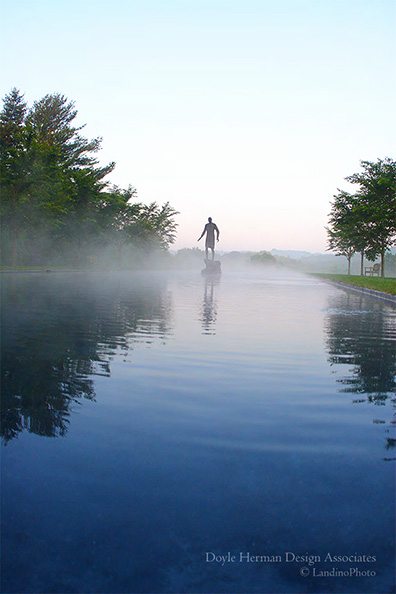
Rubber and tire sculpture by Chakaia Booker at a private residence in Waccabuc, N.Y. Landscape design by Doyle Herman Design Asssociates; photo by Neil Landino, Jr.
This early 1900s garden in Sorrento, Italy, was composed with antiquities and connects us to the legacy of the classical world. A mythological stone figure sits at an arched window overlooking the awe-inspiring bay and Mt. Vesuvius, which they say during the same 79 A.D. eruption that buried Pompeii also damaged the original Imperial Roman villa sited here.
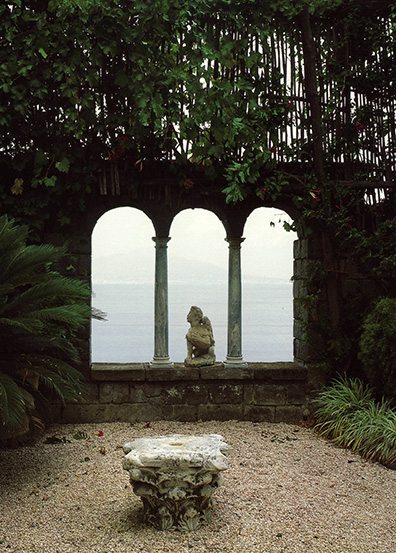
Villa Astor. Photo from “Gardens of the Roman World†by Patrick Bowe, courtesy of Getty Publications
I used to drive by this street art daily on my way home from work, and it always excited me. The installation sits at the US 101 freeway entrance in San Francisco, where an urban industrial area gives way to a maze of highways, bridges and gridlock. For a second, the viewer could easily assume it is a big one-way sign for the on ramp, until the beautiful scene comes into focus. This one lone gum tree is just about the only thing alive right there, and this artwork does not let us ignore it.
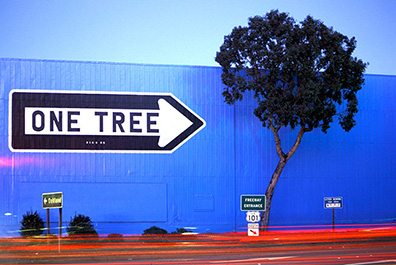
Rigo 23: One Tree. Photo by Kenny Trice from The New York Times
–Rosalia Sanni
Rosalia Sanni is a senior landscape designer at Doyle Herman Design Associates, an award-winning landscape design firm based in Greenwich, Conn., that undertakes projects throughout the United States and overseas. Rosalia herself is currently located in Boston, and you can also find her on Twitter at @rosaliasanni.
Share
![NEH-Logo_Black[1] NEH-Logo_Black[1]](https://www.nehomemag.com/wp-content/uploads/2022/08/NEH-Logo_Black1-300x162.jpg)
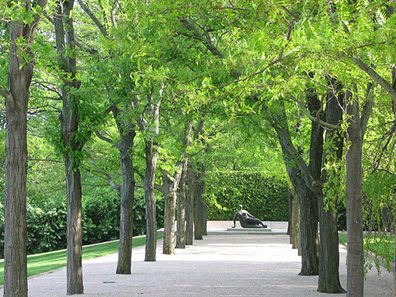
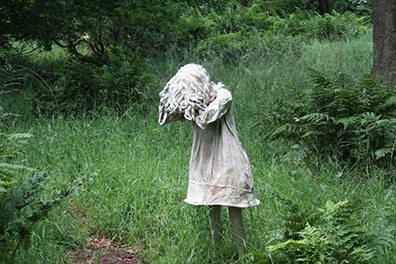
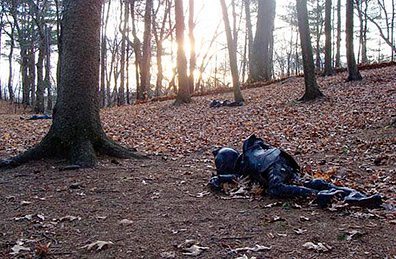




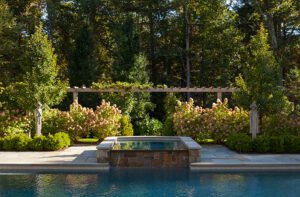
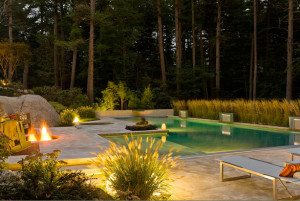


You must be logged in to post a comment.